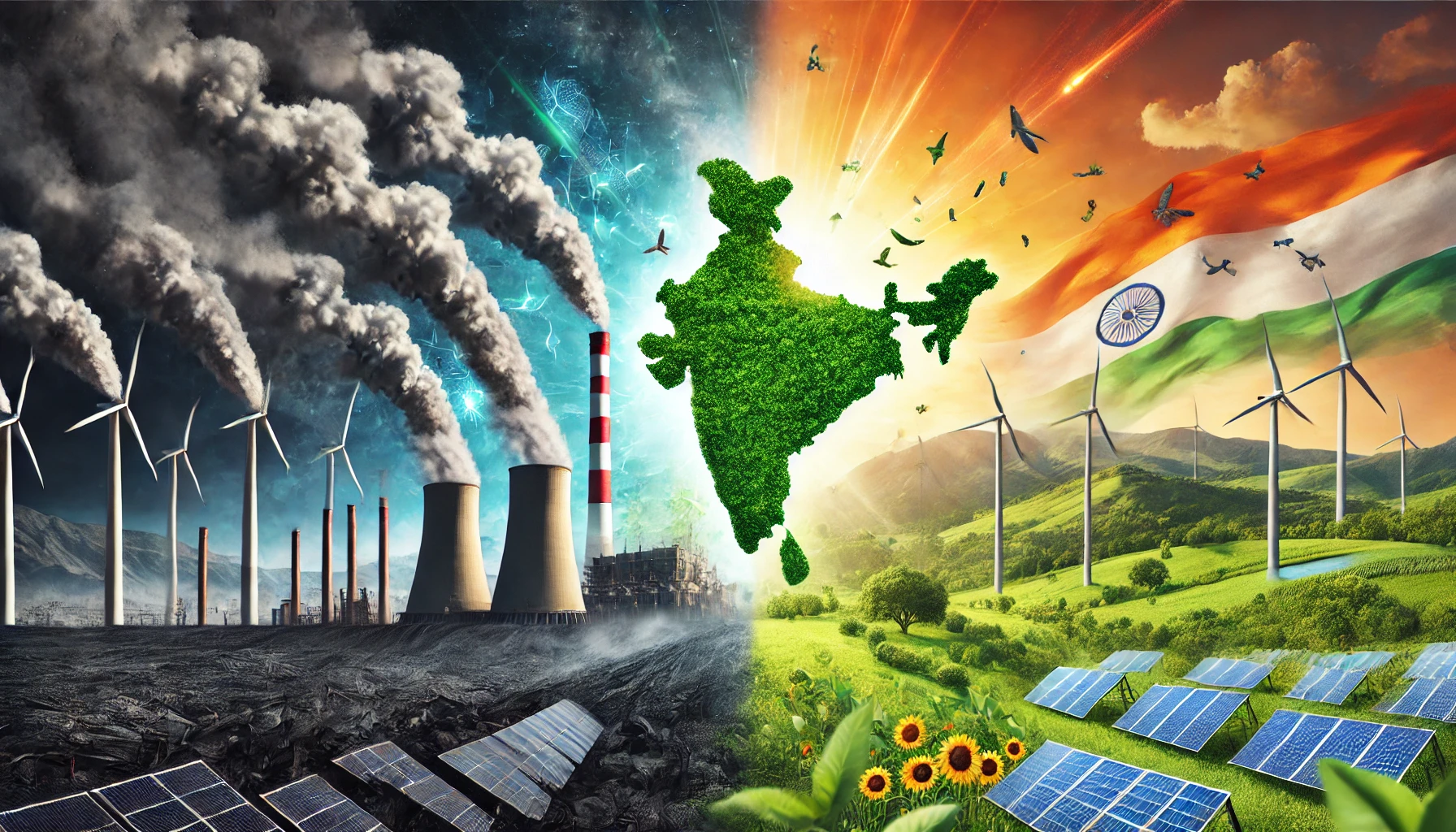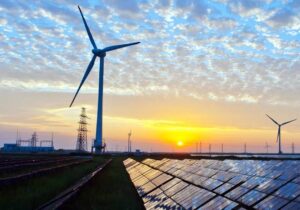India's Renewable Energy Surge: Challenges, Opportunities, and Future Prospects
Introduction
India is at the forefront of a significant energy transition, with a firm commitment to expanding its renewable energy capacity. The country has set an ambitious target of achieving 500 GW of non-fossil fuel-based energy by 2030, reinforcing its commitment to sustainability and reducing carbon emissions. As one of the fastest-growing economies in the world, India’s energy demand is soaring, making renewable energy a crucial element of its strategy for energy security and environmental sustainability.
Overview of India’s Renewable Energy GoalsIndia has made bold strides in clean energy adoption, with policies and investments aligned to meet the 2030 target. The nation’s commitment is driven by several key factors:
Paris Agreement Goals: India pledged to achieve 50% cumulative electric power installed capacity from non-fossil fuel sources by 2030.
Reducing Carbon Emissions: The push for renewables is crucial in India’s strategy to achieve net-zero emissions by 2070.
Energy Independence: With rising import bills for coal and oil, shifting to renewables ensures greater energy security.
Importance of Renewable EnergyThe transition to renewable energy is not just an environmental necessity but also an economic opportunity. The benefits include:
Lower Carbon Footprint: Reducing dependence on fossil fuels mitigates greenhouse gas emissions.
Energy Access and Security: Renewable energy projects, especially solar and wind, improve energy access in remote areas.
Job Creation: The renewable sector is a major employer, with increasing demand for skilled workers in manufacturing, installation, and maintenance.
Current Developments in Renewable Energy1. Solar EnergySolar power is the fastest-growing renewable energy source in India. The country has made significant progress in solar capacity expansion:
Installed Capacity: As of 2024, India’s solar capacity stands at 100.3 GW, making it one of the top solar energy producers globally.
Government Initiatives: Programs such as the PM-KUSUM scheme, Rooftop Solar Program, and Solar Parks Scheme have driven rapid growth.
Cost Competitiveness: Solar energy is now cheaper than coal-based power in many regions, increasing its attractiveness.
2. Wind EnergyIndia has the world’s fourth-largest wind power capacity:
Installed Capacity: Wind energy contributes over 44 GW to India’s total renewable energy capacity.
Offshore Wind Potential: The government is exploring offshore wind energy projects, with Tamil Nadu and Gujarat identified as potential locations.
Hybrid Solutions: Integration of solar and wind energy in hybrid projects is gaining traction, ensuring more stable power generation.
3. Other Renewable SourcesWhile solar and wind dominate, other renewables contribute significantly:
Biomass Energy: India has a large potential for biomass and waste-to-energy projects.
Small Hydro Projects: Hydropower contributes around 47 GW, but there is scope for more small hydro developments.
Geothermal and Tidal Energy: Emerging but still underexplored sectors with pilot projects underway.
Government Policies and IncentivesThe government has introduced multiple policies and incentives to support renewable energy growth:
1. Tax Rebates and SubsidiesAccelerated Depreciation Benefits: Encourages investment in renewable projects.
Production-Linked Incentives (PLI) for Solar Manufacturing: Boosts domestic manufacturing of solar panels and components.
Subsidies on Rooftop Solar Installations: Promotes decentralized renewable energy generation.
2. International CollaborationsInternational Solar Alliance (ISA): India, along with France, launched ISA to promote global solar deployment.
Foreign Direct Investments (FDI): 100% FDI is allowed in the renewable energy sector, attracting global investors.
Challenges Facing the Renewable Energy SectorDespite the progress, India faces multiple challenges in achieving its renewable energy goals:
1. Grid Integration IssuesIntermittency Problem: Solar and wind energy depend on weather conditions, leading to fluctuations.
Grid Infrastructure: The existing power grid requires significant upgrades to handle renewable integration.
Energy Storage Solutions: Large-scale battery storage and pumped hydro storage projects are needed.
2. Financing and InfrastructureHigh Initial Costs: While the operating costs of renewables are low, upfront investment is significant.
Policy Uncertainty: Inconsistent policies and state-level regulatory challenges can deter investors.
Land Acquisition: Large solar and wind projects require vast land areas, often leading to local opposition.
3. Policy Stability and ImplementationNeed for Long-Term Policy Frameworks: Frequent policy changes create uncertainty for investors.
State-Level Implementation Gaps: While central policies are strong, execution at the state level varies.
Future Prospects and OpportunitiesIndia’s renewable energy sector presents numerous opportunities for growth and investment:
1. Achieving the 500 GW TargetScaling Up Solar and Wind: Government initiatives must ensure rapid scale-up in capacity.
Grid Modernization: Strengthening transmission and distribution networks is crucial.
Incentivizing Private Investments: More public-private partnerships (PPPs) will accelerate progress.
2. Emerging TrendsGreen Hydrogen: India is positioning itself as a major producer of green hydrogen for industrial use.
Floating Solar Projects: Water-based solar installations can help overcome land constraints.
Energy Storage Technologies: Advancements in battery storage solutions will enhance grid stability.
3. Investment OpportunitiesRenewable Energy Companies: Investments in solar panel manufacturing and wind turbine production.
Infrastructure Development: Building smart grids and energy-efficient transmission networks.
Research & Innovation: Startups focusing on AI-driven energy management and smart solutions.
Conclusion:
India’s renewable energy journey is a beacon of hope for sustainable development. While challenges exist, the country’s ambitious targets, strong government support, and investment potential make the renewable energy sector a promising avenue for growth. To achieve the 500 GW target by 2030, continuous policy support, innovation, and public-private collaboration will be essential.
- Fur-Ever Friends Boutique: Tail-Wagging Treasures
- Critter Comforts and Beyond: Exploring the Expansive World of Pet Shops
- Paws, Claws, and Beyond: Navigating the Vast Realm of Pet Store Wonders




